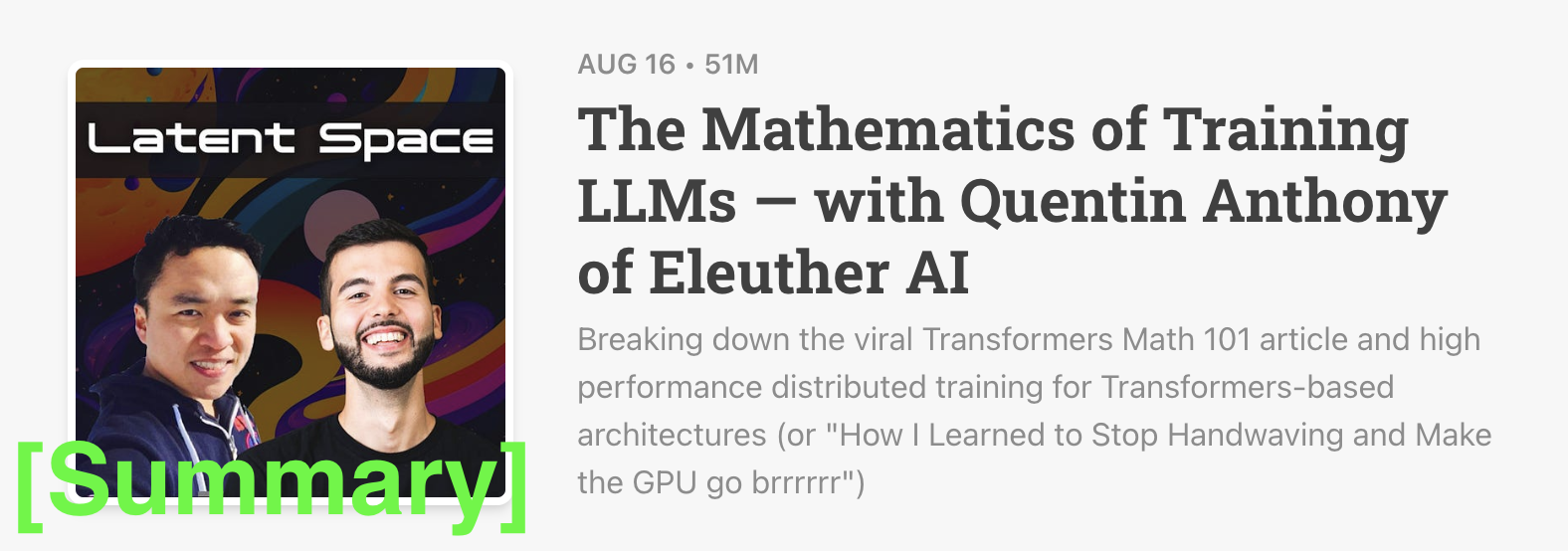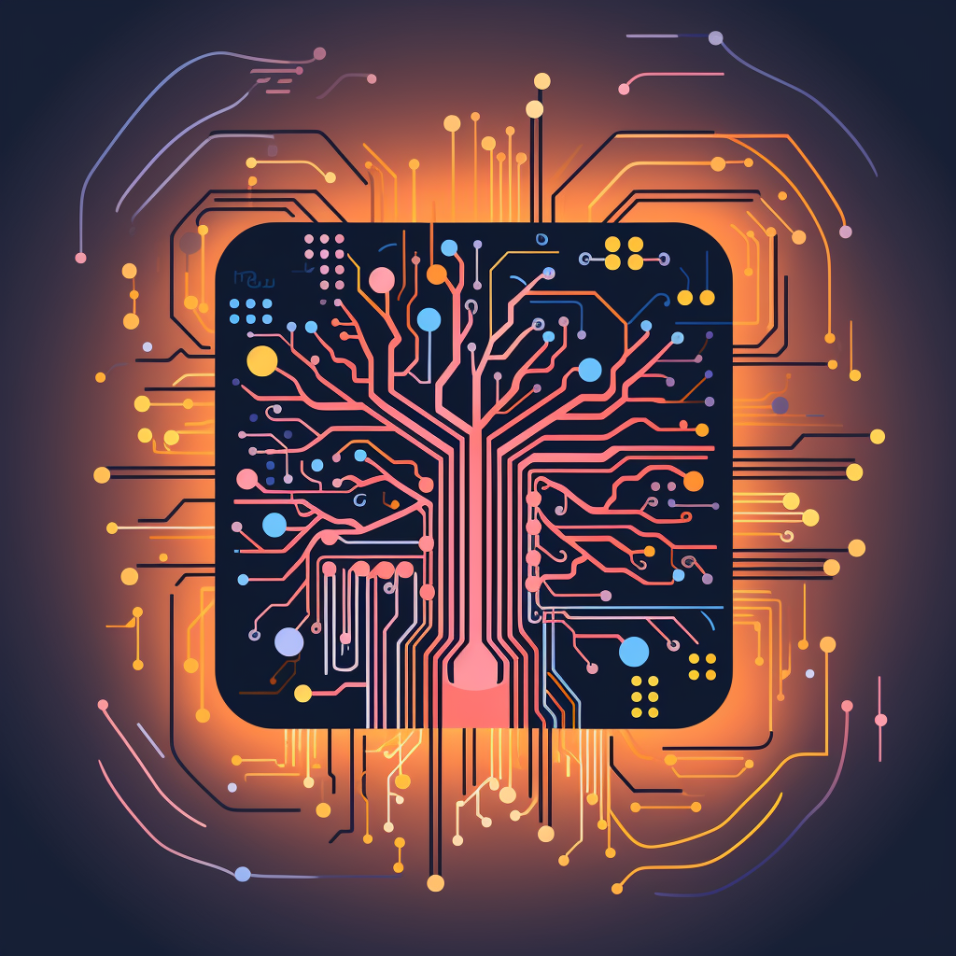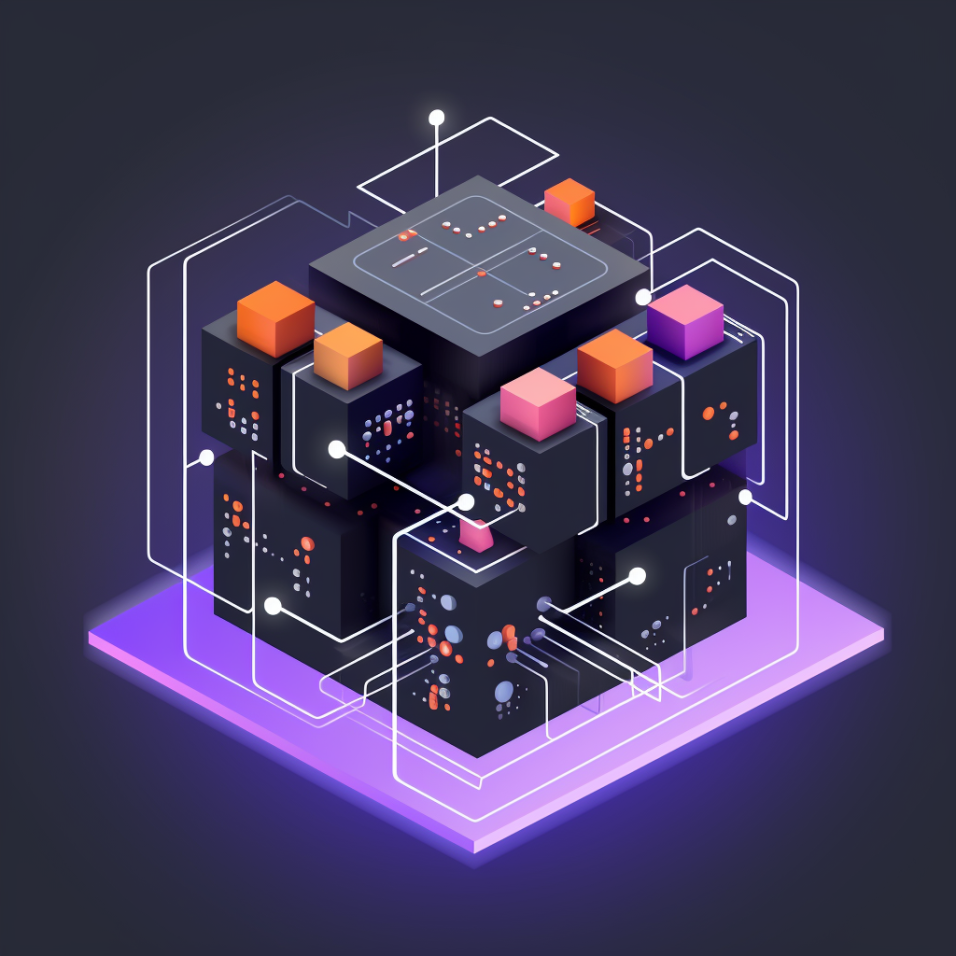Original Link: The Mathematics of Training LLMs — with Quentin Anthony of Eleuther AI
The Mathematics Behind Training Large Language Models [Summary]
In the recent episode of the Latent Space podcast, hosts Alessio and Swyx are joined by Quentin Anthony, an integral figure from Eleuther.ai. They begin by appreciating Eleuther's Transformers Math 101 article, regarded by many as a highly authoritative source for understanding AI's underlying math and the intricacies of training large language models. Quentin elaborates on his journey, from being a PhD student at Ohio State University to joining Eleuther and diving deep into the challenges of distributed AI model training.
Quentin also sheds light on the primary motivation behind writing the article. Despite many in the Deep Learning (DL) space being familiar with the theory of AI, few delve into the practical intricacies—such as understanding how AI inference runs correctly across multiple GPUs. With the article, Eleuther aimed to bridge this gap and share knowledge that would benefit engineers beyond the institution's walls.
Further, Quentin emphasizes the importance of considering not just the dataset but also the computational requirements. This involves taking into account the total computational time and the cost associated with it, making the equation they discuss central to understanding compute requirements. The conversation steers towards the strategies for efficient GPU usage, pointing out the common pitfalls and challenges faced during high-scale deployments.
Throughout, the underlying theme is the need for practical intuition, with Quentin stressing the "good enough" approach over chasing perfection. The talk offers a blend of theoretical understanding and pragmatic insights into the world of AI and large model training.





![Latent Space Podcast 8/10/23 [Summary]: LLMs Everywhere: Running 70B models in browsers and iPhones using MLC — with Tianqi Chen of CMU / OctoML](/_next/image?url=https%3A%2F%2Fwww.datocms-assets.com%2F101962%2F1691894611-screenshot-2023-08-12-at-10-42-43-pm.png&w=3840&q=75)

![Latent Space Podcast 8/4/23 [Summary] Latent Space x AI Breakdown crossover pod!](/_next/image?url=https%3A%2F%2Fwww.datocms-assets.com%2F101962%2F1691539617-screenshot-2023-08-08-at-8-02-52-pm.png&w=3840&q=75)
![Latent Space Podcast 7/26/23 [Summary] FlashAttention 2: making Transformers 800% faster - Tri Dao of Together AI](/_next/image?url=https%3A%2F%2Fwww.datocms-assets.com%2F101962%2F1691543194-screenshot-2023-08-08-at-8-43-59-pm.png&w=3840&q=75)
![Latent Space Podcast 7/19/23 [Summary] - Llama 2: The New Open LLM SOTA (ft. Nathan Lambert, Matt Bornstein, Anton Troynikov, Russell Kaplan, Whole Mars Catalog et al.)](/_next/image?url=https%3A%2F%2Fwww.datocms-assets.com%2F101962%2F1691968295-screenshot-2023-08-13-at-7-11-06-pm.png&w=3840&q=75)
